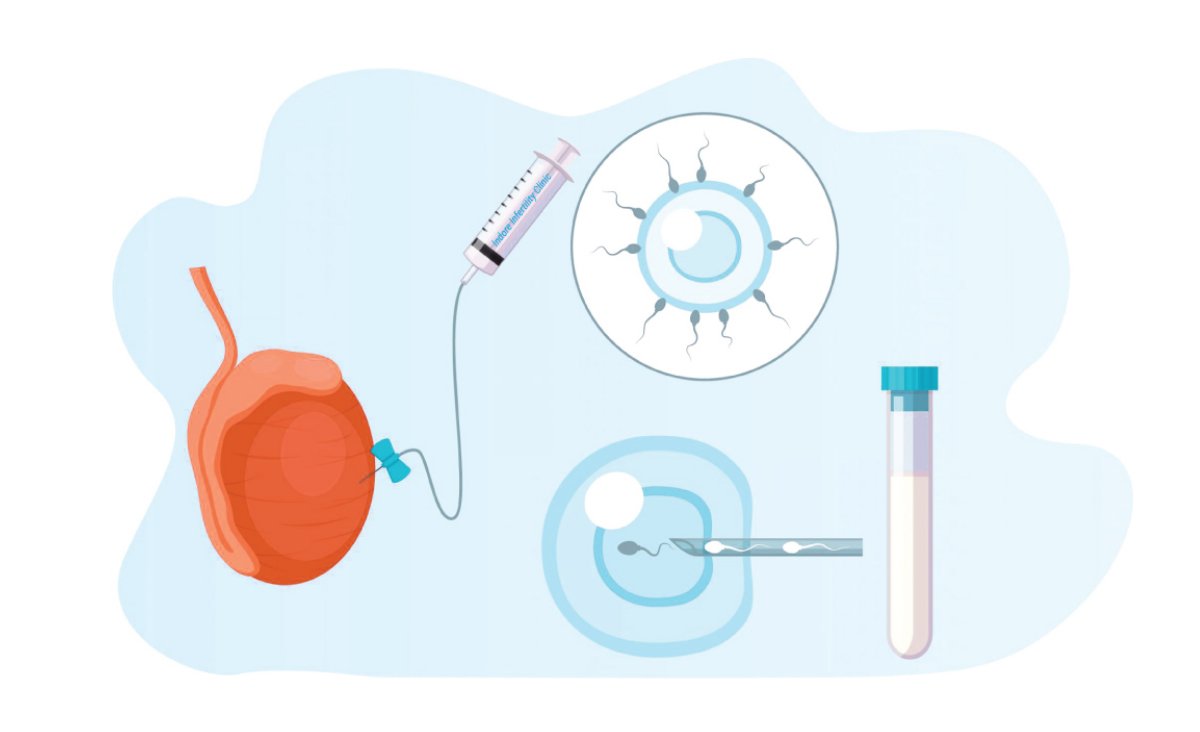TESA & PESA at Renew Healthcare: Advanced Solutions for Male Infertility
Introduction
Trying to conceive and start a family can be an incredibly exciting time. However, this journey can be filled with unexpected challenges and emotional hurdles for some couples. Infertility, the inability to conceive naturally after one year of trying (or six months if the woman is 35 or older), can be a source of stress, disappointment, and frustration.
Male Factor Infertility: It Takes Two
While female infertility is often at the forefront of discussions, male infertility is a significant contributing factor in roughly half of all infertility cases. What causes men to be infertile? Problems with sperm production, quality, or motility can significantly impact a couple’s ability to conceive.
Here’s a breakdown of some common causes:
- Blockages: If blockages exist in the vas deferens (the tube that carries sperm from the testicles to the urethra) or other parts of the reproductive tract, sperm may not be present in the ejaculate.
- Low Sperm Count: Even when sperm are present in the ejaculate, the count might be too low for natural conception. Why does sperm count decrease? Sperm count can drop due to age, illness, or lifestyle choices.
- Absence of Sperm: In some cases, there may be a complete absence of sperm in the ejaculate (azoospermia). TESA allows for directly retrieving sperm from the testicles, even when they are not reaching the ejaculate.
Couples may need the help of a reproductive consultant to find solutions to these conditions. The next step is understanding what is an andrology clinic?
An andrology clinic specialises in diagnosing and treating male reproductive health issues, including infertility. A consultation with an andrologist can help identify the cause of infertility and determine the right course of action.
Hope Through Innovation
Fortunately, advancements in modern medicine offer new hope for couples facing male infertility. Testicular Sperm Aspiration (TESA) and Percutaneous Epididymal Sperm Aspiration (PESA) are minimally invasive surgical procedures that can retrieve sperm directly for use in assisted reproductive technologies (ART) like In Vitro Fertilization (IVF) or Intrauterine Insemination (IUI).
Understanding the Techniques: What are TESA & PESA?
TESA (Testicular Sperm Aspiration): TESA involves using a fine needle to extract a small tissue sample directly from the testicles. This tissue contains sperm-producing tubules (seminiferous tubules) where sperm production occurs. In a laboratory setting, these tubules are then carefully examined to identify and isolate any sperm that may be present.
PESA (Percutaneous Epididymal Sperm Aspiration): PESA, on the other hand, focuses on retrieving sperm from the epididymis. The epididymis is a coiled tube located above each testicle that serves as a storage and maturation area for sperm after they are produced in the testicles. During PESA, a fine needle is inserted through the skin and into the epididymis to aspirate sperm.

TESA/PESA are outpatient procedures with a short recovery time. You can resume most activities relatively quickly. As with any procedure, minor side effects like bruising or discomfort are possible but typically subside soon.
What Happens to the Aspirated Sperm After Retrieval?
Once sperm are retrieved through TESA or PESA, their journey continues in the laboratory:
- Isolation and Analysis: Lab technicians meticulously examine the aspirated tissue or fluid to locate sperm. Advanced techniques may be used to separate sperm from other cells and debris.
- Sperm Quality Assessment: The retrieved sperm undergoes a thorough analysis to assess its motility (movement), morphology (shape), and concentration.
Depending on the sperm quality, the retrieved sperm can be used for different assisted reproductive techniques:
- In Vitro Fertilization (IVF): The retrieved sperm is directly injected into an egg using Intracytoplasmic Sperm Injection (ICSI). This bypasses the natural fertilisation process and increases the chances of conception, even with low sperm count or motility issues.
- Intrauterine Insemination (IUI): In some cases, if the sperm quality is sufficient, the retrieved sperm can be washed, concentrated, and then inserted directly into the woman’s uterus around the time of ovulation. This technique increases the number of sperm reaching the egg and enhances the chances of fertilisation.
Taking Charge of Your Fertility
If you’re concerned about your sperm count or overall fertility, seeking professional guidance is crucial. An andrologist can thoroughly evaluate underlying issues and recommend appropriate treatment options, including TESA or PESA procedures.
Who Can Benefit from TESA/PESA?
TESA and PESA procedures are primarily used for men experiencing infertility due to issues with sperm retrieval, not necessarily sperm production itself.
- The leading indicator for considering these procedures is azoospermia, the complete absence of sperm in the ejaculate. Two main types of azoospermia can benefit from TESA/PESA:
- Obstructive Azoospermia: This occurs when a blockage exists somewhere in the reproductive tract, preventing sperm produced in the testicles from reaching the ejaculate. In such cases, TESA or PESA can retrieve sperm directly from the testicles (TESA) or the epididymis (PESA), bypassing the blockage.
- Non-obstructive Azoospermia: Here, the issue lies with sperm production itself. While less common, TESA can still be a viable option. By directly extracting testicular tissue, sperm may be present even if they are not being released into the ejaculate.
- Vasectomy Reversal: These procedures can be used to retrieve sperm after a vasectomy procedure, potentially allowing a man to father children again.
Having Hope with TESA/PESA: Building Your Family Through Innovation
Studies show that TESA and PESA lead to:
- High Fertilization Rates: Over 60% of procedures result in successful fertilisation.
- Healthy Embryo Development: A significant percentage (around 45%) of embryos develop into high-quality, increasing pregnancy chances.
- Clinical Pregnancies: Over half of the procedures lead to confirmed clinical pregnancies.
Next Steps: Partnering for Success
Every couple’s journey is unique. A consultation with a fertility specialist is crucial to determine if TESA/PESA is the right option for you. They can provide personalised guidance and discuss the best action to achieve your family-building goals.
At Renew Healthcare, our team has extensive experience treating male infertility and successfully performing TESA/PESA procedures. Ready to take the next step? Schedule a consultation today, and let’s explore the possibilities together.
Key Takeaways:
- Male infertility contributes to half of the infertility cases, often due to issues with sperm production, quality, or motility.
- Testicular Sperm Aspiration (TESA) and Percutaneous Epididymal Sperm Aspiration (PESA) are minimally invasive procedures to retrieve sperm directly from the male reproductive system.
- TESA and PESA offer hope for men with azoospermia, whether obstructive or non-obstructive and can assist in conception even after a vasectomy.
- Retrieved sperm are used in assisted reproductive technologies like In Vitro Fertilization (IVF) and Intrauterine Insemination (IUI) to enhance the chances of conception.
- TESA/PESA procedures boast high fertilisation rates, healthy embryo development, and significant clinical pregnancy success rates.
